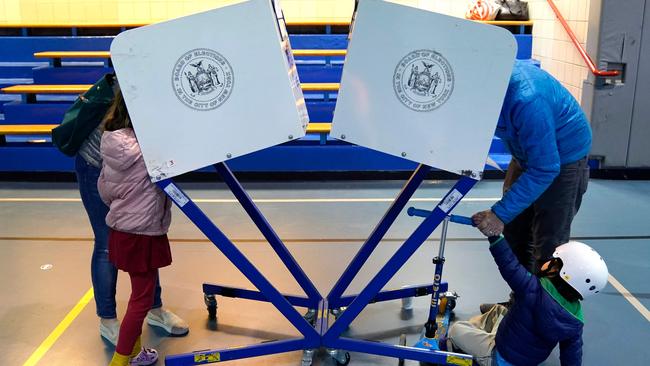Biden’s agenda vs. Trump’s obsession: voters split on the lesser evil
There may not have been the much-anticipated red wave, but there was a fair-sized Republican tide in terms of the popular vote that hasn’t been reflected in the number of congressional seats the party won.

The system is rigged! Our democracy is broken! There may not have been the much-anticipated red wave last week, but there was a fair-sized Republican tide in terms of the popular vote that doesn’t seem to have been reflected in the number of congressional seats the party won. Don’t hold your breath waiting for an outraged media to tell us how American democracy is fatally flawed.
There are still votes to be counted (thanks, California, technology capital of the world, which tallies ballots at the pace of an 18th-century English rotten borough) and the final number may change, but as it stands, Republicans are leading the aggregate vote in the 435 House races by about 52 per cent to 47 per cent.

In the 2020 election, Democratic House votes exceeded Republican ones by 3 percentage points. If this year’s numbers hold, that represents a swing in the margin of almost 8 points. For comparison, in 2018, which was generally reported as a wipeout for the Republicans and a repudiation of president Donald Trump, the two-party swing was about 9.5 points. That time the Democrats gained 41 seats. This time the Republican gain may be held to fewer than 10.
The demographic changes in the composition of the GOP vote may be making the party’s election performance less efficient than in the past. With surveys last week showing significant Republican gains among Hispanic and black voters, the party’s share might have been significantly boosted in deep-blue urban districts, where it still lagged way behind the Democrats’. Second, there were fewer competitive districts this year, in part because of redistricting.

But how much was the result of targeted voting — the conscious rejection by voters in competitive districts of Republicans associated with Trump and his “Stop the Steal” fixation?
It will take time to compile a thorough analysis of how and why individual races turned. But it’s widely acknowledged now from Senate and governor races that the Trump factor was significant — the differential performance between Trumpy Senate candidates and non-Trumpy gubernatorial candidates in Ohio and Georgia, for example, and hefty defeats for the Trumpiest of gubernatorial candidates in Pennsylvania, Michigan and Wisconsin are too striking to ignore.
In the House there is intriguing scattered evidence of a similar pattern. In Michigan’s Third District, Peter Meijer voted to impeach Trump after the January 6 riots. He lost renomination in a primary to a Trump supporter, John Gibbs, who went down by 13 points in a district Trump won in 2020 by three points.

In Washington’s Third District, Jaime Herrera Beutler, another Republican impeachment supporter who was ousted in a primary, won her district two years ago by 13 points. Last week her Trump-backed successor lost to a Democrat.
In Colorado’s Third District, uber-Trumpy conspiracy theorist Lauren Boebert is essentially tied with her Democratic opponent in a district Trump won by six points.
These scattered cases can’t explain the wider discrepancy between House votes and seats, and some Trumpy candidates won handily too.
But it seems that in many competitive districts Republicans should have won, voters were turned off by the party’s continuing flirtation — or worse — with those who would undo a previous election.
Americans seem to have voted in solid numbers for Republicans to take back the House and block President Biden’s progressive agenda. But across the country, in elections for House, Senate, governor and, strikingly, secretary of state — Trump supporters campaigning to take charge of states’ electoral system almost all lost — election deniers and Trump acolytes were routed.
There’s a message in there somewhere.

The Wall Street Journal







